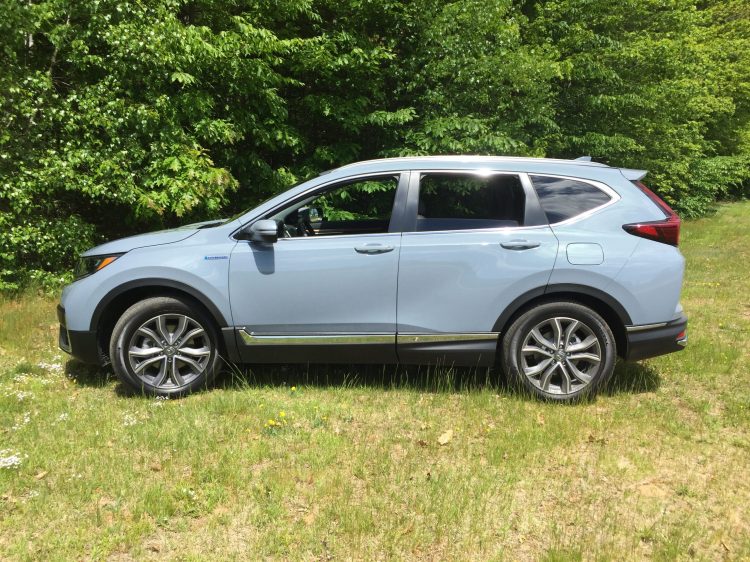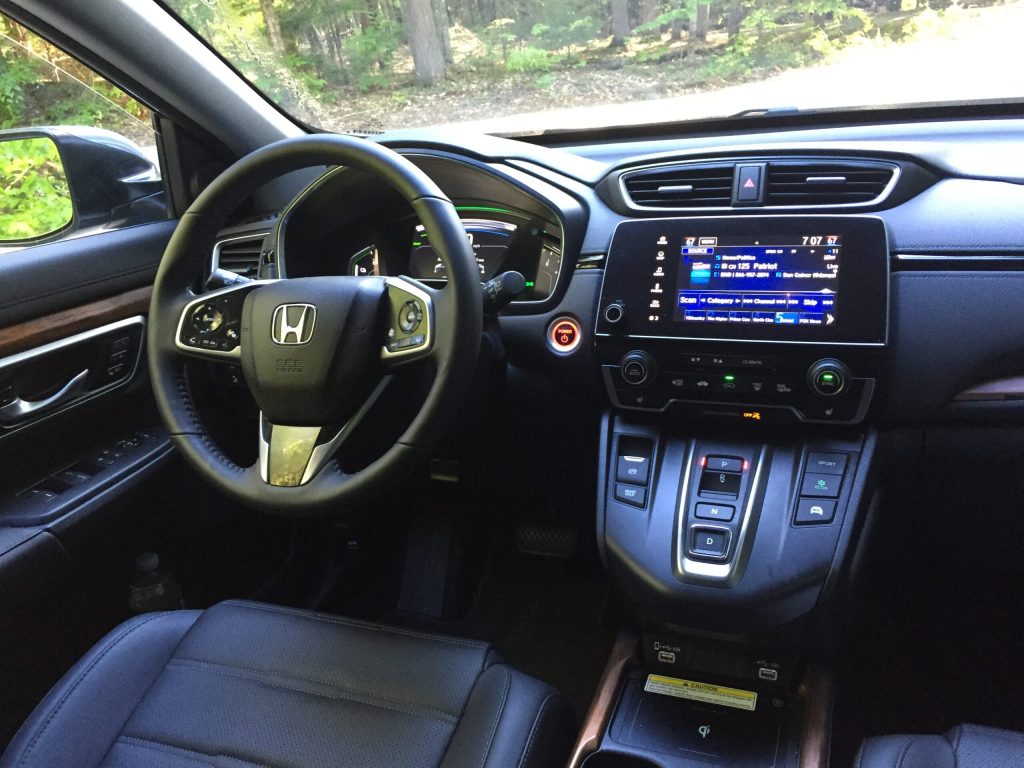Last year, full-size pickup trucks were the three top-selling vehicles in America. In second place were the numerous models of compact-class crossovers, the vehicles that are swiftly replacing the car in today’s car market. Toyota’s RAV4 led this pack, followed by the CR-V, Chevy’s Equinox, Nissan’s Rogue, and Ford’s Escape.
Last year also saw Toyota sell more hybrid versions of its revised RAV4 than all of Honda’s hybrid offerings—combined. Certainly, product planners witnessed these trends before the marketing staff started begging for the hybridized CR-V, as did the folks at Ford. While Honda and Ford have dipped their toes in and out of the hybrid-powered market, only Toyota has stuck with this technology, consistently, since 1997.
And 1997 is also noteworthy as the first year of the CR-V. Millions have been sold since, as this stone-reliable, spacious two-row wagon has now displaced the Civic and Accord as the brand’s mainstay product. A $100 bill to the reader who predicted that 10 years ago.
Almost exactly the same size as the RAV4 and Ford Escape (181 inches long, 105 inch wheelbase, and 3,450 pounds), the CR-V features the roomiest rear seating and is the best design for superior space optimization. With a flat second row floor, lots of cubbies, and good visibility all around, the CR-V could be the equivalent of the mini-minivan—but without the sliding doors.
While rear cargo room is sacrificed for the electric battery pack—as well as the spare tire—the hybrid CR-V retains Honda’s AWD setup that delivers extra traction, or power, on long grades and extended full-throttle requests. There are sport and economy selections on the console, but no locking button for the AWD.
And while the CR-V hybrid has the most peak power of any CR-V—212-hp combined from the 2.0 liter four and the twin electric motors vs. 190-hp for the 1.5-liter turbo standard motor—the hybrid actually delivers similar driving performance. Where the hybrid shines is in two important categories; it is quieter on the road, (although there is a lot of humming, whirring, and buzzing going on at certain speeds) plus fuel economy jumps from 27/32-mpg to 40/35-mpg.
Yes that’s correct, the city mpg is higher than the highway economy, owing in great part to the single-speed direct drive transmission’s ability to maximize the added torque from the electric motors. Our time together saw 36+mpg combined highway/urban economy, which is still markedly better than a conventional CR-V, but several mpg less than Toyota’s RAV4 hybrid, as well as the ratings for the new Ford Escape hybrid.
Except for the trio of external badges, drivers would not generally know that the CR-V hybrid is different from its peers. The same Continental tires are used, the handling and ride remain the same, while the overall flexibility of the platform is uncompromising. You are just going to have to get used to going to the gas station less often.
CR-V hybrid pricing starts at $28,870 in LX trim, $2,700 more than a comparable base LX with AWD. You can also pick EX or EX-L trim ($33,870), or choose top Touring trim, as shown, for $35,950 with all of the usual attendant features like power liftgate, sunroof, electric driving aids, remote engine start, plus front and rear parking sensors and heated steering wheel. Honda’s LaneWatch system is absent and the touchscreen panel is about average compared to the latest presentations—in both appearance and ease of use. The screen is better integrated into the dash layout than some rivals, which makes sense. Seating is very good, the view from the helm is better than most, yet I couldn’t stop wondering why you can see a large portion of the taillamp in your side mirror.
Compact crossover buyers have readily signaled that they like the added height of this platform over a car (easier access), they want the added cargo flexibility of a two-box wagon instead of a sedan, plus the majority of driver’s love the driving security provided by AWD.
With the hybrid powertrain, Honda is boasting that they will quickly elevate past their current 7% of the fleet being electrified, with a goal of reaching 30% in five years. The success of the RAV4 hybrid proves that buyers want this powertrain, and will pay extra for it. A $100 bet says the CR-V won’t be the last Honda crossover to gain a hybrid powertrain.
Send questions/comments to the editors.




